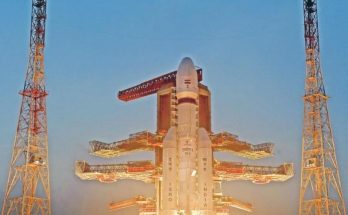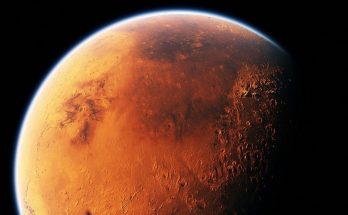Scientists have long studied the work of Subrahmanyan Chandrasekhar, the Indian-born American astrophysicist who won the Nobel Prize in 1983, but few know that his research on stellar and planetary dynamics owes a deep debt of gratitude to an almost forgotten woman: Donna DeEtte Elbert.
From 1948 to 1979, Elbert worked as a “computer” for Chandrasekhar, tirelessly devising and solving mathematical equations by hand. Though she shared authorship with the Nobel laureate on 18 papers and Chandrasekhar enthusiastically acknowledged her seminal contributions, her greatest achievement went unrecognized until a postdoctoral scholar at UCLA connected threads in Chandrasekhar’s work that all led back to Elbert.
Elbert’s achievement? Before anyone else, she predicted the conditions argued to be optimal for a planet or star to generate its own magnetic field, said the scholar, Susanne Horn, who has spent half a decade building on Elbert’s work.
Now Horn and UCLA professor of Earth, planetary and space sciences Jonathan Aurnou have published a paper in Proceedings of the Royal Society A in which they present the newly named “Elbert range,” which details their predictions about the range of combinations that rotation, convection and magnetism may assume to best generate a planet-wide magnetic field.
The work, the authors say, will help researchers in a variety of disciplines to better understand conditions in Earth’s interior and within other planets and to identify planets outside our solar system with the potential to host life.
“Elbert had no formal mathematics degree, but what she did, most people couldn’t do nowadays. It’s really tough math usually done using modern electronic computers,” said Horn, now an associate professor at the Research Centre for Fluid and Complex Systems at Coventry University in the UK. “Chandrasekhar says in footnotes that the subtle and elegant ways to solve particular problems were actually put forward by Elbert. She’s all over his treatise on geophysical and astrophysical fluid dynamics but is not an author. Today, she would be considered a mathematician in her own right, but in the ’50s and ’60s, it was hard for a woman to get more credit than a footnote.”
And because Elbert’s discovery concerning the generation of planetary magnetic fields remained embedded within her employer’s body of work, the finding has generally been attributed to Chandrasekhar, who shared the Nobel in physics for discoveries related to stellar evolution and massive stars.
Horn said she hopes the work she and Aurnou have undertaken to refine and expand upon Elbert’s original predictions provides a fitting—if belated—tribute to Elbert, who died in 2019 at the age of 90.
The Elbert range: How planets and stars create magnetic fields
Planets generate their own magnetic fields through the internal circulation of heated, electrically conducting fluids such as liquid metals or very salty oceans. As a planet rotates on its axis, the movement of these fluids becomes organized, generating planetary magnetic fields along the way. Scientists think that planets with magnetic fields are more likely to sustain life because the magnetic field acts as a sort of cocoon that shields the planet from the surrounding, often unfriendly space environment, Aurnou said.
“The key is you have all these fluid motions. Earth’s core is dominantly comprised of liquid iron. As the planet slowly cools to space, the cooler upper part of the liquid core sinks, and the hotter iron rises at depth,” he explained.
The movement caused by this sinking and rising is known as convection. Convection motions in electrically conducting materials, such as the liquid iron in Earth’s core, can create electric currents that can then generate a planet’s global magnetic field.
“It’s not clear if convective turbulence alone will generate a planetary-scale magnetic field,” Aurnou noted, “but we know planetary rotation organizes the turbulence into patterns of motion that can.” In other words, he said, rotational forces called Coriolis forces move fluids in predictable ways as the planet spins. “Elbert was the first to point out that when these rotational forces are comparable in strength to magnetic forces, then convection will start to become organized on the scale of the planet itself. It’s such a simple, sensible system.”
Elbert discovered this principle on her own while Chandrasekhar was on a summer lecture tour and presented it to him upon his return. He incorporated Elbert’s finding into his own work and credited her in a footnote without delving further into its significance.
But Horn leapfrogged off Elbert’s work.
“What we did is seek how the patterns of convection in liquid metals and their evolution vary when subject to both rotation and magnetic fields,”
Horn said. “We found that there are different regimes of convective behavior, and we mapped out where these exact regimes are. This work makes a whole suite of new predictions that we will use to build future laboratory and numerical models of planetary and stellar magnetic field generation.”
The open-access paper, “The Elbert range of magnetostrophic convection. I. Linear theory,” is the first in a series of three papers Horn and Aurnou plan to publish that build on Elbert’s work.
#DonnaDeEtteElbert; #stellarDynamics; #planetarydynamics





